Results
-
 £159.99
£159.99Tirol Terra Fortis (Concert Band - Score and Parts) - Van der Roost, Jan
The Stadtmusikkapelle Wilten-Innsbruck (Austria) invited Belgian composer Jan Van der Roost to write a work to mark the bicentenary of the Tyrolean fight for freedom, which was settled in 1809. Various musical elements reflect this historical event. First, a hymn-like section rings out, based on melodic fragments from the 'Tiroler Landeshymne' (by Leopold Knebelsberger), which intertwine in a counterpoint-like arrangement. The second passage is more bellicose in character, and mirrors the fight of the Tyroleans - under the inspiring leadership of freedom fighter Andreas Hofer (1767-1810) - against Bavarian, French and Italian troops. Next, a broad, chorale-style melody appears again: here, the imposing beauty of nature in Tyrol, and the amiable, lively temperament of the people who live in this mountainous region, are glorified.This is neither a programmatic work around an historical reconstruction, nor a politically inspired work: it is a combination of factual and cultural components, with an artistic and sonorous character. The use of the flugelhorn in particular gives Tirol Terra Fortis its 'couleur locale': for this beautiful instrument can invariably be found in the Austrian wind band. The commissioning music society had therefore specifically asked the composer to incorporate the instrument in this work. It certainly enhances the already extensive colour palette of the modern concert band!Duration: 11:00
Estimated dispatch 7-14 working days
-
 £74.99
£74.99Ayers Rock (Concert Band - Score and Parts) - Hogestein, Henk
The famous monolith Uluru (formally known as Ayers Rock) is the one of the attractions in the Northern Territory of Australia. This colossal red rock lies in the middle of a desert plain. At dusk, a beautiful spectacle develops as the setting sun envelops the rock in rose-red hues. There are tourists who used to climb the rock, while this is a taboo according to the indigenous religion of the Aboriginals. Besides, the climb is very strenuous. A walk around the rock is also an unforgettable experience. During a journey through Australia, Henk Hogestein was inspired by this rock; he composed this robust rock number to cherish the memory of it.Duration: 3:00
Estimated dispatch 7-14 working days
-
 £159.99
£159.99Il Cinghiale di Bronzo (Concert Band - Score and Parts) - Tanaka, Kumiko
This suite is based on the fairy tale The Bronze Pig by Hans Christian Andersen. This is a story about a boy who wants to be a painter and a pig made of bronze. This pig, in Florence town square, is a bronze statue with clear water pouring from its mouth. Legend has it that when an innocent child sits on its back, that the pig can run. In three movements; Flying Dreams in a Starlight Sky, La Via Porta Rossa and Twilight on the Arno River this work is a highly descriptive storytelling piece that will be equally enjoyed by young and old alike. Definitely one not to be snorted at!Duration: 9:45
Estimated dispatch 7-14 working days
-
 £206.99
£206.99Chorale and Variations (Concert Band - Score and Parts) - Sparke, Philip
As the title suggests, this piece comprises a set of variations on an original chorale,which is presented in the opening bars.The chorale uses the dark middle and lower sections of the band and is extended with minor variations until a pause leads to the first real variation, marked Vivo. This is in the form of a moto perpetuo. The second variation is a beautiful Andante introduced by a solo clarinet. Following a full band climax the final variation opens with quiet, nervous energy until its main theme is introduced.The chorale makes a brief appearance until the main theme reappears. This leads to a triumphant final augmented statement of the chorale theme, decorated by the florid clarinet theme in the upper woodwinds. A dazzling concert work.Duration: 14:00
Estimated dispatch 7-14 working days
-
 £174.99
£174.99Et in terra Pax (Concert Band - Score and Parts) - Van der Roost, Jan
This piece was commissioned by the Concert Band Vlamertinge and is a plea for peace: the title translates as Peace on Earth. This is expressed by means of the vocal contribution expected from the performers. In various places of the piece you can recognize, the words Et In Terra Pax, an appeal for peace, at first jumbled together but later more rhythmically structured, developing into synchronized massed voices. The work starts with a pentatonic theme based on the notes D, E, G, A and C (taken from 'ConCErtbAnD VlAmErtinGE' and the name of the conductor, NiCk VAnDEnDriessChe). A somewhat sad melody is developed during an orchestral climax which leads to the first explosion of sound (measure 62 onwards). Suddenly the opening measures are recaptured, albeit with a differently coloured sound: the words Et in Terra Pax bring the first movement to a close. A restless Allegro follows which abruptly stops and is replaced by a calming chorale-like passage. A narrator reads aloud the poem 'Sonnet' by the young poet Charles Hamilton Sorley, who was killed during World War I. This poem fittingly puts into words the cruelty and senselessness of war. After the expanded recapitulation of the allegro, the broad, almost infinite atmosphere of the beginning returns. Clarinet and English horn play the pentatonic opening theme once more, this time broadly, while the words Et in Terra Pax are repeated again and again by the rest of the ensemble. The composer has purposely avoided all forms of aggression and bombastic sounds regularly used in works about war. Fear of violence and destruction can be heard and felt during the allegro passages. The charged opening makes way in the end for hope: May peacefulness replace cruelty in everyday life, too.Duration: 13:45
Estimated dispatch 7-14 working days
-
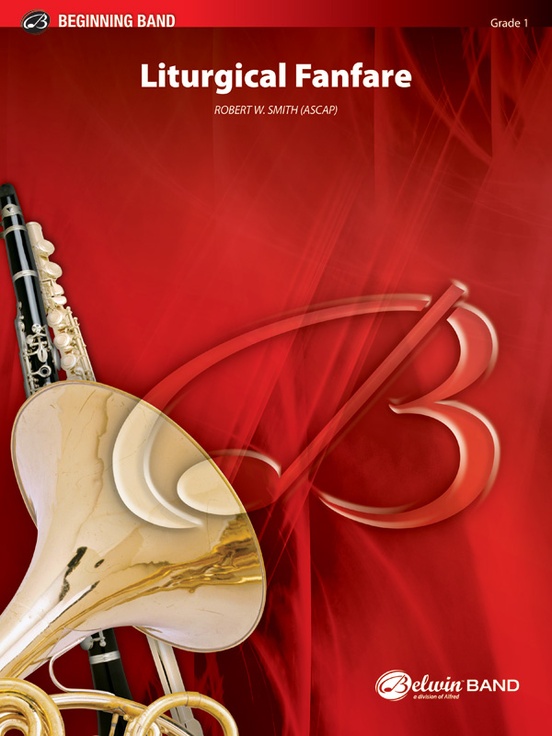 £54.95
£54.95Liturgical Fanfare - Robert W. Smith
The entire work is based upon the opening rhythmic figure of two quarter notes, two eighths, and a quarter note. is a bit more aggressive in interpretation than most works composed for this level and is an exceptional choice for a concert opener or final work. This is a wonderful opportunity to experience the full spectrum of dynamic contrasts. Powerful! (2:21) This title is available in MakeMusic Cloud.
Estimated dispatch 3-5 working days
-
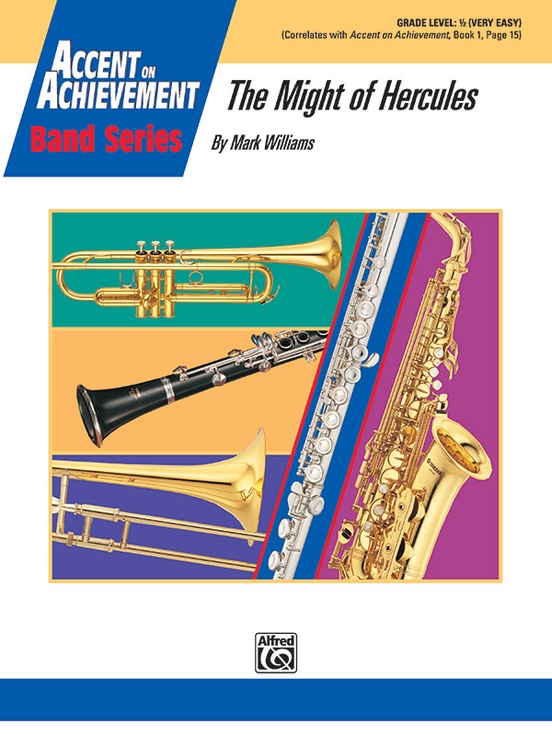 £48.95
£48.95The Might of Hercules - Mark Williams
The legendary strength of this great hero of Greek mythology is reflected in this powerful new work for first-year band. Written in the Greek modes of Phrygian and Aeolian, this impressive work combines active, driving percussion and very easy wind parts in quarter notes to produce a perfect sonic showpiece for your beginning band. Correlated with , page 15, this is destined to be an all-time student and audience favorite. This title is available in MakeMusic Cloud.
Estimated dispatch 3-5 working days
-
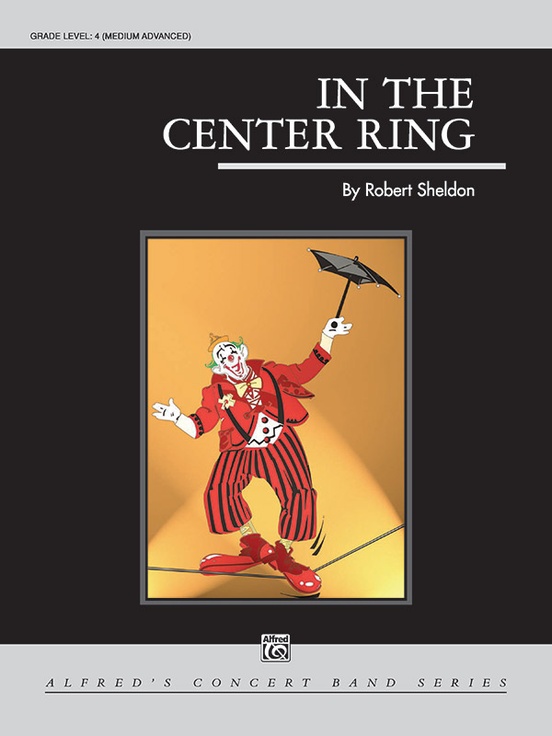 £87.50
£87.50In the Center Ring - Robert Sheldon
"In The Center Ring" was written in the autumn of 2003 for the Upper Antioch Grade School Band from Antioch, Illinois, Earl Bush, director. The piece is a musical snapshot of a circus performance, from the madcap antics of the jugglers and clowns to the elegance of the high-wire and trapeze performers. This wild musical romp is certainly a technical challenge, but is also great fun for the performer and listener alike. Above all, remember this is a theatrical piece - so emphasize the dynamics, bring out the inherent comedy and have FUN! This title is available in MakeMusic Cloud.
Estimated dispatch 3-5 working days
-
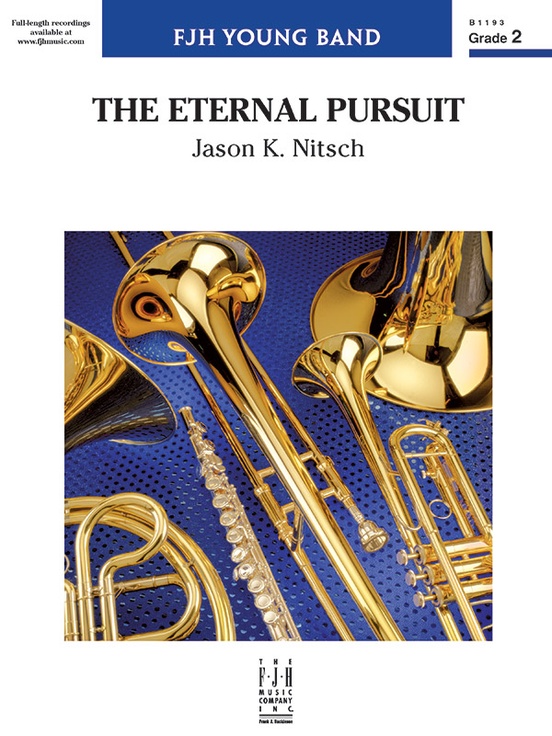 £45.95
£45.95The Eternal Pursuit - Jason K. Nitsch
This new contemporary work was premiered at the 2002 Midwest Clinic and is an excellent way to make use of all your percussionists. After an eerie introduction, a haunting melody is presented that continues throughout. This is definitely a unique and refreshing style which is very welcome at this grade level. Strongly consider this work from Texas composer and middle school band director, Jason Nitsch.
Estimated dispatch 3-5 working days
-
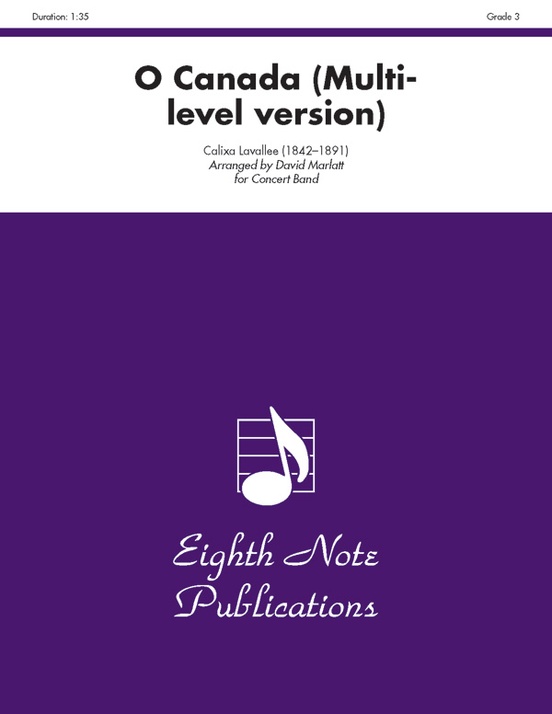 £50.50
£50.50O Canada (multi-level version) - Calixa Lavallée / arr. David Marlatt
Over the years there have been surprisingly few arrangements of the national anthem of Canada. This version is quite unique and will prove to be extremely useful in all kinds of performance situations. This is not an arrangement for only one difficultly level, it is for four! There are four versions found in everyone's part: All these versions are in the same key and use the same basic harmonies which means they are all completely interchangeable! If you have an excellent trumpet player in your grade 1 1/2 level band, she/he can play the next version up and it will all fit together and sound great! This revolutionary concept means that elementary schools and high schools can own the same set and combine players for a mass band concert. This set of arrangements is ideal for any program no matter what the diversity of talents.
Estimated dispatch 3-5 working days
